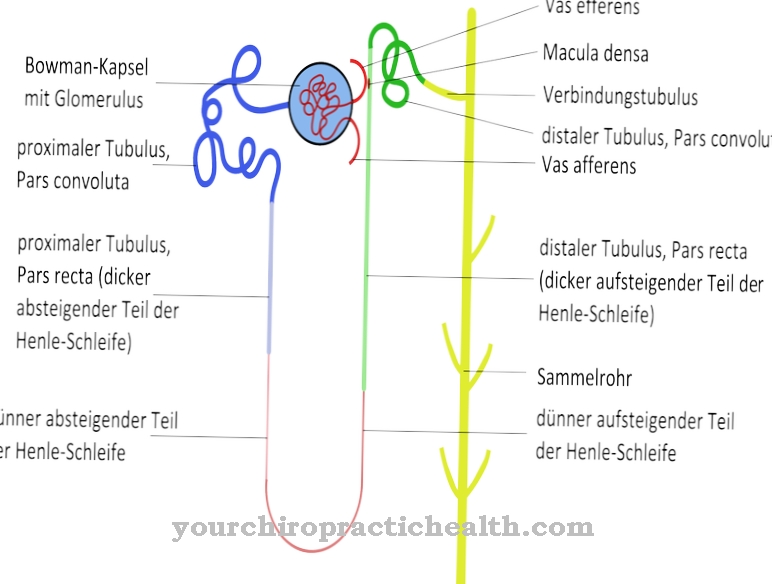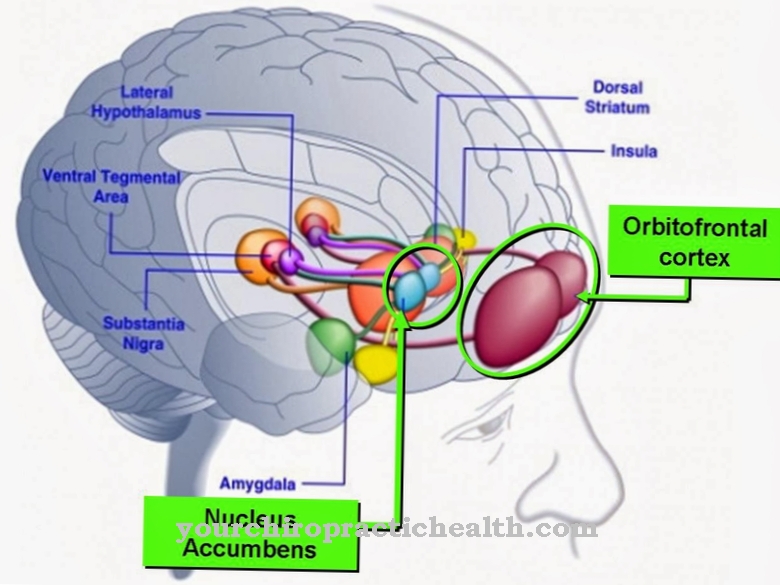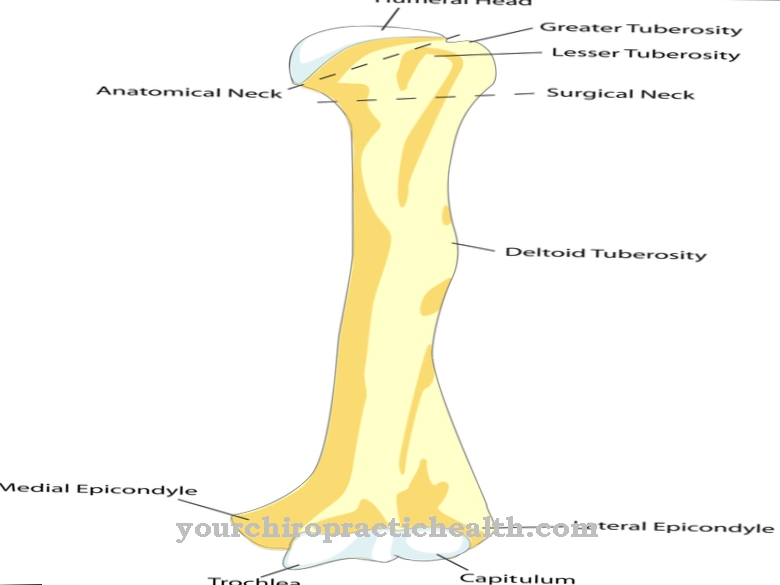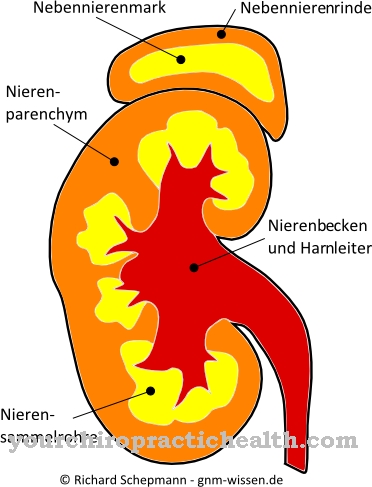The Parotid gland is in pairs and is the largest salivary gland in the human body. Topographically, the parotid gland is bounded by the external auditory canal and the lower jaw. The entire organ is covered with a connective tissue layer of fascia, the so-called parotid compartment.
What is the parotid gland?
The parotid is a purely serous body gland, histologically it shows connective tissue, septa and wide ducts through which the saliva formed is secreted into the oral cavity.
If you take a closer look at the cells of the paroiteal gland, you will notice an increased number of mitochondria. Since these are the power plants of a cell, anatomists assume an increased metabolic rate in the cells of the parotid gland. With increasing age, fat cells can also be found in the parotid, the function of saliva formation is then correspondingly restricted, which in turn can represent the breeding ground for diseases of the parotid gland.
Together with the other two large salivary glands, the mandibular and sublingual salivary glands, the parotid gland produces around 90 percent of human saliva. About 1000 to 1550 milliliters of saliva are produced over the course of 24 hours. This corresponds to a secretion rate of 0.6 to 1.1 milliliters of saliva per minute.
Anatomy & structure
The salivary-secreting organ function cells of the parotid gland consist of highly prismatic squamous epithelium. In addition to the typical connective tissue capsule, the gland is permeated by lymph follicles, ganglia, nerves and blood vessels. Like the other head glands, the parotid gland is also sympathetically innervated.
All 3 salivary glands of the human body are almost identical in their tissue structure. So there is no clear histological identifier for the parotid gland. The duct system of the parotid gland is also known as acini. The acini open to various exit points in the mouth through which the saliva flows.
The excretory ducts are surrounded by nerve fibers as well as lymph and blood vessels. The sub-lingual and mandibular salivary glands produce a predominantly slimy, viscous secretion. The parotid secretion, on the other hand, has an almost watery consistency.
Function & tasks
The only job of the parotid gland is to produce saliva. Assumptions that the parotid gland could also be a hormonal organ could not be confirmed. Through the duct system, the saliva produced is continuously delivered to individual, solitary glands within the entire mucous membrane of the throat, oral cavity and lips.
Saliva production can only dry up completely in the event of illness. The saliva secretion of the parotid gland is increased by up to five times compared to normal production when eating or other irritations of the sympathetic nerve. The least amount of saliva is produced at rest at night. The main component of the watery saliva of the parotid gland is water, and saliva also contains various electrolytes, proteins and enzymes.
Salivary enzymes are primarily used to initiate the digestive process of complex sugar molecules such as starch. In addition, simple proteins can be cleaved by the so-called proteases of the parotid and thus prepared for further digestion in the stomach. Solid food is liquefied by saliva and thus makes the swallowing process much easier.
In addition, the saliva also has a certain protective and defense function. Because saliva is important for cleaning the sensitive mucous membrane surfaces of the mouth and throat. Saliva is also important for keeping the tooth substance healthy, because saliva neutralizes harmful acids and hardens the tooth enamel with dissolved minerals. Foreign substances, for example viruses, heavy metals or antibiotics, are verifiably excreted in the saliva.
Illnesses & ailments
Acute and chronic diseases can occur in the parotid gland, which are almost always based on an inflammatory process. If the parotid gland is inflamed, the doctor speaks of parotitis. Parotitis can be caused by bacteria, viruses, or pathogenic fungi.
The best-known inflammation of the parotid gland is parotitis epidemica, also popularly known as mumps, a childhood disease. This viral inflammation can only be treated symptomatically and usually heals again after 2 weeks without consequences. In rare cases, however, serious complications such as the dreaded mumps orchitis occur. This inflammation of the testicles can cause absolute sterility in men.
Other parotitides occur more and more after the age of 50 and are an expression of a disturbed fluid balance. In addition, stone diseases of the parotid gland are a clinically relevant phenomenon. Patients with stones in the parotid gland are more prone to inflammation due to this obstacle to drainage. Larger salivary stones on the parotid must be surgically removed.
There is a tendency to the increased formation of salivary stones with chronic disease. The risk of inflammation and stone formation in the salivary glands can be minimized through adequate fluid intake, careful oral hygiene and the avoidance of alcohol and nicotine. In old age, benign or malignant tumors can also occur on the parotid gland.






.jpg)









.jpg)
.jpg)



.jpg)






